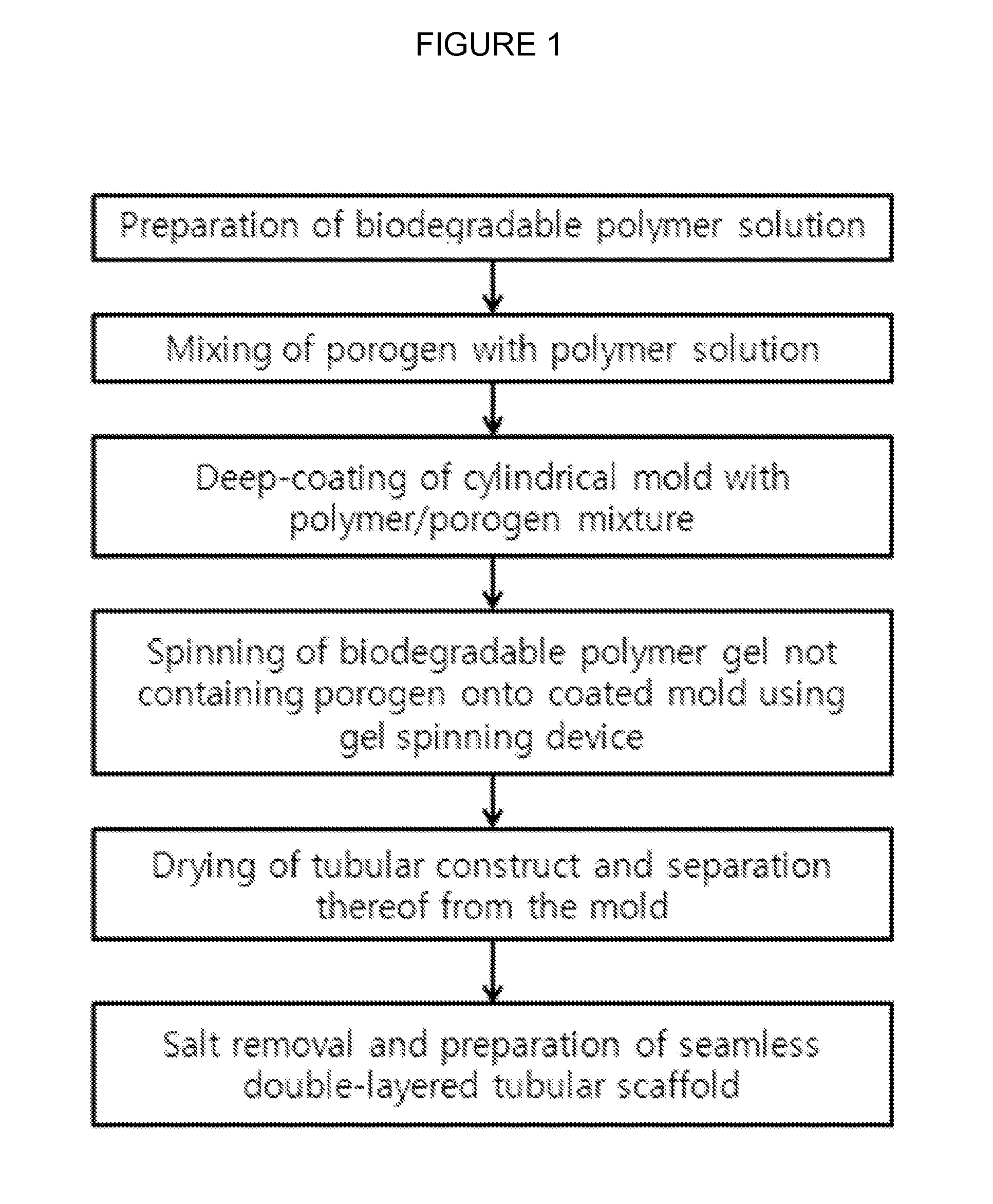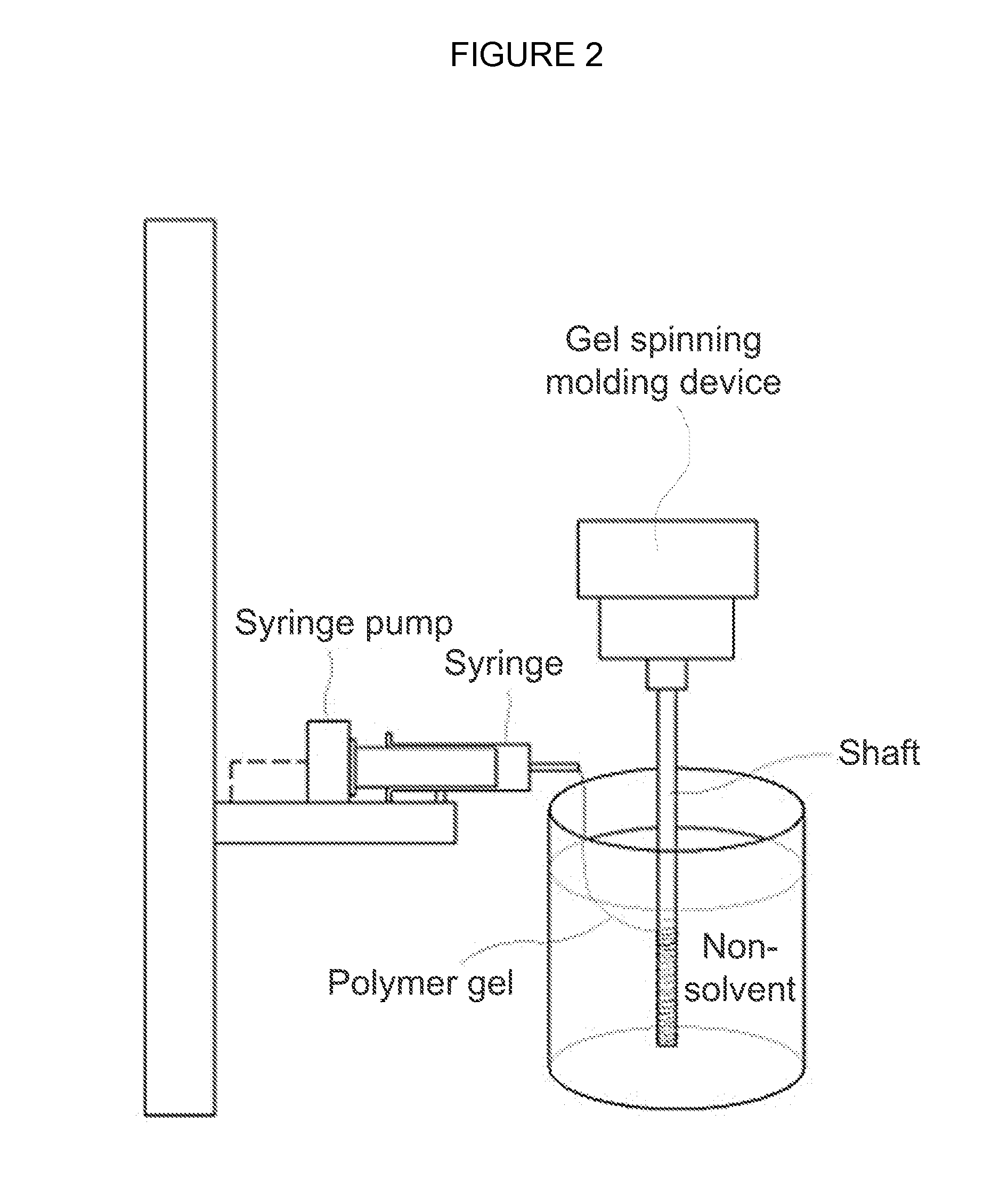Method for the preparation of tube-type porous biodegradable scaffold having double-layered structure for vascular graft
- Summary
- Abstract
- Description
- Claims
- Application Information
AI Technical Summary
Benefits of technology
Problems solved by technology
Method used
Image
Examples
example 1
Preparation of Tube-Type Porous Scaffolds Having a Double-Layered Structure
[0039]PLCL (50:50 composition ratio of monomers) having a molecular weight of 450,000 Da was dissolved in chloroform at a concentration of 7.0% (w / v). Sodium chloride less than 20 microns in diameter was separated through sieving, and was mixed with the PLCL solution at PLCL to NaCl ratios of 1:1, 2:1 and 9:1. A cylindrical shaft 6.5 mm in diameter was immersed in the PLCL / NaCl mixture to a depth of about 10 cm, and was impregnated at 25° C. for 15 min, thereby forming an inner porous coating layer containing micropores on the surface of the cylindrical shaft.
[0040]The cylindrical shaft having the inner porous coating layer was immersed in a coagulation bath containing methanol and rotated at 300 rpm. PLCL, having the same molecular weight as that used for forming the inner layer, was dissolved in chloroform at a concentration of 7.5% (w / v), poured into a syringe of a gel spinning device, and spun down throug...
PUM
| Property | Measurement | Unit |
|---|---|---|
| Fraction | aaaaa | aaaaa |
| Fraction | aaaaa | aaaaa |
| Pore size | aaaaa | aaaaa |
Abstract
Description
Claims
Application Information
 Login to View More
Login to View More - R&D
- Intellectual Property
- Life Sciences
- Materials
- Tech Scout
- Unparalleled Data Quality
- Higher Quality Content
- 60% Fewer Hallucinations
Browse by: Latest US Patents, China's latest patents, Technical Efficacy Thesaurus, Application Domain, Technology Topic, Popular Technical Reports.
© 2025 PatSnap. All rights reserved.Legal|Privacy policy|Modern Slavery Act Transparency Statement|Sitemap|About US| Contact US: help@patsnap.com



